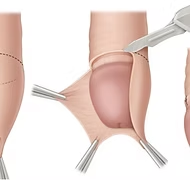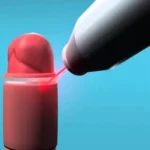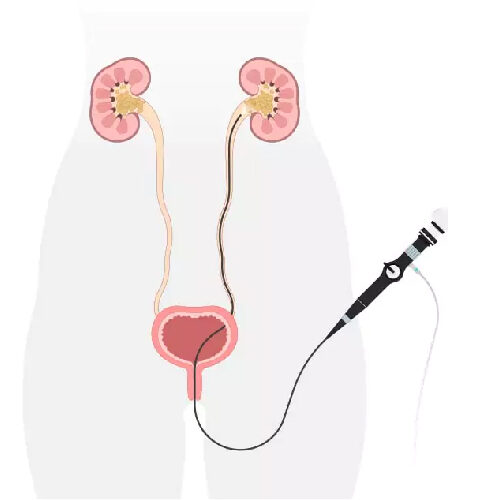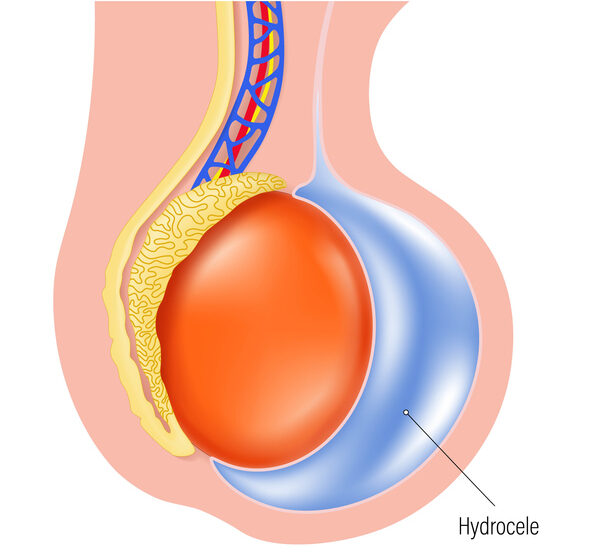Balanitis is an infection of the skin on the head of the penis. This happens mostly in uncircumcised males, and it is necessary to get it treated promptly. You can get the best treatment for Balanitis at HeptaCare Health, with top-notch medical technologies and equipment. To get rid of all penis foreskin issues, book your consultation today with HeptaCare Health.
Happy Patients
Disease
Hospitals
Cities
Balanitis is pain and inflammation of the penis glans that generally occur due to infection on the skin on the head of the penis. There are various causes. While yeast infection, also called candida balanitis, is one of the most common reasons behind balanitis, it can also be caused due to bacterial infections.
Alongside improper hygiene, reaction to latex condoms, allergic reaction to certain medications, and STDs can cause balanitis as well. Balanitis can be treated with antibiotics and antifungal creams. But, when these medical treatments fail to provide relief, urologists often suggest circumcision as the best treatment for balanitis symptoms.
A balanitis infection is generally not serious, and while it may cause pain and discomfort, it can be cured using topical medications. Balanitis is a non-contagious condition meaning it cannot spread from one person to another.
However, it is possible to transfer the underlying infection that caused it in the first place. Some symptoms that may be indicative of balanitis are:

Balanitis is divided into three types:
Zoon Balanitis is the most common type of Balanitis. It impacts uncircumcised, middle-aged, and older men, resulting in an inflamed, red penis tip. It is also known as plasma cell balanitis. The starting treatment procedure may involve maintaining good hygiene and using emollient creams. Circumcision is curative.
It happens because of reactive arthritis. It is a kind of arthritis that evolves in reaction to an infection in the body. In addition to redness and inflammation, Circinate Balanitis also leads to small lesions (sores) on the tip of the penis. At the earlier stage, people experience mini dots with a white plaque. It then grows into red areas not bordered by white plaque. Patients do not suffer from itching or burning, nor do they go through bad smells.
This type of Balanitis causes warts on the glans. It is a very rare urological condition affecting men over 60 years. The condition is typically asymptomatic, but maceration, fissuring, and irritation may be linked. The clinical course of PKMB is chronic and can be recurrent after treatment.
Balanitis is more commonly found in uncircumcised men in comparison to the circumcised ones. The main cause of balanitis is poor hygiene practices. Due to improper hygiene, microbes such as bacteria, fungi, and yeast can thrive and multiply in the dark and moist area under the foreskin, eventually leading to infections. Due to these infections, the head of the penis, and sometimes the foreskin too gets swollen. Some other causes of Balanitis are mentioned below:
Various germs on the skin may enhance and cause infection. Therefore, a prevalent cause of Balanitis is a yeast or bacterial infection prompted by a fungus- candida.
Some sexually transmitted infections can also cause balanitis. But it takes place occasionally. Precisely, an STI happens if you have swelling of the urethra.
Certain skin conditions can also cause Balanitis- for example, psoriasis can affect the penis. In addition to psoriasis, other skin conditions can cause Balanitis but are unfamiliar.
Skin is a very sensitive part of the human body, and it can get swollen if it gets affected by specific procedures, chemicals, or other irritants. For example:
Poor hygiene around the penile area, accompanied by a tight foreskin, can result in irritation caused by smegma. Smegma is a cheesy substance that develops under the foreskin if the glans are not cleaned.
Prior to balanitis treatment, your doctor will perform a series of tests and diagnostics to not only evaluate your overall health but also uncover any underlying medical conditions you may have that could require additional care or precautions, during or after surgery. Balanitis infection is typically diagnosed with a simple physical examination as most of its symptoms are visible.
Alongside, your urologist may also perform some additional tests to better understand not only any potential balanitis causes behind it but also the type of balanitis you have. Some tests and diagnostics that your urologist may perform include:
The treatment of Balanitis depends on the cause. If a yeast infection triggers the problem of Balanitis, then your doctor will advise you to use an antifungal cream. Furthermore, if you have an infection caused by a skin bacteria, you will be advised to apply an antibiotic cream and to wash the area properly. Sometimes antibiotic pills may be required.
You must keep the area clean and dry when the skin is swollen but not infected. Soaps, skin lotions, or other chemicals that aggravate the condition should be avoided. In uncircumcised men, circumcision is the best method of treatment for Balanitis. Circumcision is a procedure performed to remove the foreskin from the head of the penis.
It prevents recurrent infections, primarily in men with tight and difficult-to-retract foreskin. This is because the removal of the foreskin stops the accumulation of urine or any residual matter that leads to Balanitis in the first place. In the absence of the foreskin, there is no longer an environment for an infection or inflammation that can result in Balanitis. Hence, a permanent solution for balanitis can be stapler circumcision.
Balanitis occurs mostly in men with the tight foreskin (prepuce) that is difficult to retract over the glans penis.
Balanitis is a very discomforting condition that can hinder your personal as well as professional life. It can often be a very painful experience and can impact your sexual life as well. Therefore, it is quite obvious that one would want to get rid of balanitis as soon as possible.

Before moving on to surgical treatments, your urologist may recommend the use of some non-surgical alternatives for treating candidal or fungal balanitis. Depending on what is causing your condition, treatment may vary as well.
If your balanitis is caused by a yeast infection, sometimes referred to as candida balanitis, your healthcare provider may prescribe the use of antifungal cream for balanitis.
Creams for balanitis infection need to be applied on the head of the penis and foreskin. Some of the most commonly used brands of antifungal creams that your urologist may prescribe to treat fungal balanitis are given below:
If a Sexually Transmitted Disease (STD’s) is the reason behind your balanitis, your healthcare provider may prescribe you some antibiotics to treat the infection.
Depending on the infection, the type of antibiotics best suited for you is likely to vary as well. There are primarily three types of antibiotics that are generally recommended for effective balanitis treatment:
It is to be noted however, that before taking any of the above-mentioned ointments and medications, it is important to consult your urologist first.
There’s no proven home remedies to treat balanitis. Some balanitis home remedies and tips can help you manage or relieve some of the symptoms related to balanitis:
When balanitis occurs repeatedly, it is termed recurrent balanitis. This condition can cause significant discomfort and requires proper medical attention to manage and prevent further episodes.
Engaging in any sexual activities, with balanitis can be dangerous, especially if you don’t know the reason behind it. Balanitis itself is not a contagious condition.
However, it is still possible to pass on the underlying infection that caused it, to the sexual partner. Thus, it is often advised to refrain from any sexual activities until either your balanitis has healed or your doctor thinks it’s safe to do so.
If you have sex anyway, given below is what you can expect before and after balanitis treatment:
Balanitis advances very slowly and generally does not hinder any physiological functions. If left untreated, though, balanitis can lead to severe complications such as:
The average cost of a balanitis surgery in India can range anywhere from Rs. to Rs. .
Depending on various factors, however, such as the method of your surgery, hospital charges, cost of preoperative tests and diagnostics, and the cost of postoperative medications, the exact cost of your surgery is likely to vary.
Balanitis surgery is generally covered by most health insurance plans in India if it is deemed to be a medical necessity by your healthcare provider.
If left untreated, balanitis can lead to a multitude of penis related complications and diseases that not only affect your everyday life but also may require additional, more complex surgical procedures for treatment.
However, if the reason behind your surgery is strictly cosmetic in nature, as is the case with any other cosmetic procedure, it is highly unlikely that your insurance plan will provide coverage for it.
Prior to surgery, it is best to have a detailed discussion about your insurance plan and its inclusions and exclusions with your insurance provider.
Penis infection can arise from various pathogens, including bacteria, fungi, and viruses, leading to different types of infections with distinct symptoms and treatments. Some of the common penis infections are:
Maintaining good hygiene, practicing safe sex, and seeking prompt medical attention for any unusual symptoms are crucial for preventing and managing penis infections.
A circumcision surgery is generally considered to be a safe and effective balanitis treatment. Circumcision is a surgical procedure that involves the removal of the foreskin covering the penile glans or the head of the penis. There are primarily three methods of performing circumcision:
Laser circumcision is an advanced and minimally invasive procedure that is performed to remove the foreskin using a high-energy laser beam surgically.
circumcision is extremely precise and does not involve the risk of any deep cuts or excessive bleeding. The recovery period in case of laser circumcision is considerably less and has been shown to have better results and postoperative quality of life.
Stapler circumcision is a more conventional form of circumcision that is safe, quick, and efficient. circumcision is performed using a disposable surgical device that is specially designed to remove the foreskin.
This stapler device fits snugly around the head of the penis and, once fired, removes the foreskin in a quick motion.
Alongside, the stapler device also leaves behind a silicone ring around the incision wound to close it off and minimize bleeding. This silicone ring falls off on its own after 7-10 days once the wound heals.
Open circumcision, sometimes referred to as dorsal slit technique, is a traditional method of performing circumcision that is performed using either a scalpel or surgical scissors.
In an open circumcision, the surgeon makes an incision along the upper length of the foreskin from the tip of the corona to expose the penile glans.
Compared to laser and stapler circumcision, open circumcision is more invasive and, as a result, requires longer to heal. It also carries significantly more risk of complications either during or after surgery.
Balanitis is a medical condition that advances very slowly. Therefore, it doesn’t possess the power to hinder any physiological function. But, prolonged Balanitis can have severe complications if left untreated and can lead to chronic inflammation and other complications, like:
The possibility of risks and complications after balanitis surgery (Circumcision) is quite low. However, it does not mean it can’t cause any complications at all. Therefore, listed below are some possible risks and complications associated with circumcision surgery that you must be aware of:
So it is always recommended to do laser circumcision surgery from experienced urologist for safe and secure procedure.


Based on 7721 Recommendations | Rated 4.68 Out of 5
Happy Patients
Clinics
Cities
Surgeries
Doctors
Hospitals

Laser circumcision is a safe and painless procedure to remove the foreskin with minimal bleeding and quick recovery.

Laser circumcision is a modern, painless procedure using a laser to remove the foreskin with minimal bleeding and fast recovery.

Phimosis is a condition where the foreskin of the penis is too tight to be pulled back over the head, causing discomfort or difficulty in hygiene.

RIRS (Retrograde Intrarenal Surgery) is a minimally invasive procedure to remove kidney stones using a small flexible scope through the urinary tract.

Hydrocelectomy is a surgical procedure to remove a hydrocele, which is a fluid-filled sac around the testicle, relieving swelling and discomfort.

Common symptoms include itching, pain during bowel movements, bleeding, and swelling around the anus.
Laser circumcision is generally safe. Rare complications may include mild swelling, redness, or infection, which are easily managed by your doctor.
Costs vary by clinic and city. Many clinics also offer cashless treatment, EMI options, or insurance coverage, making it affordable for patients.
Keep the area clean and dry, follow prescribed medications, avoid strenuous activity, and attend follow-up appointments for proper healing.
● laser circumcision surgery cost in Vizag ● low-cost laser circumcision surgery in Hyderabad ● cashless laser circumcision treatment near me ● painless laser circumcision surgery in Vijayawada ● laser circumcision treatment with insurance in Vizag ● laser circumcision removal surgery cost in Hyderabad ● laser circumcision operation packages in Vijayawada ● affordable laser circumcision treatment near me ● laser circumcision treatment clinic in Hyderabad ● laser circumcision doctor consultation charges in Vizag ● best laser circumcision surgery cost in Vijayawada ● laser circumcision treatment hospital near me ● laser circumcision operation price in Hyderabad ● low-cost laser circumcision treatment in Vizag ● laser circumcision removal cost near me ● laser circumcision treatment with EMI in Vijayawada ● laser circumcision surgery specialist near me ● laser circumcision surgery packages in Hyderabad ● laser circumcision treatment clinic near me ● laser circumcision surgery near me
Disclaimer: **The result and experience may vary from patient to patient.. ***By submitting the form or calling, you agree to receive important updates and marketing communications.
Getting an accurate diagnosis can be one of the most impactful experiences that you can have.

cure with care
Copyright © 2025. All rights reserved.
Consult with our expert surgeon for more than 50+ diseases
Happy Patients
Hospitals
Cities